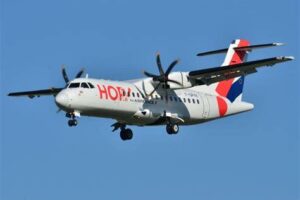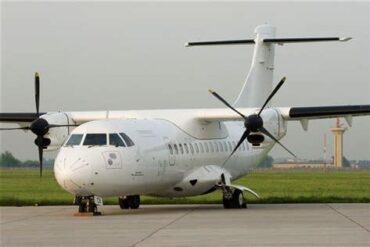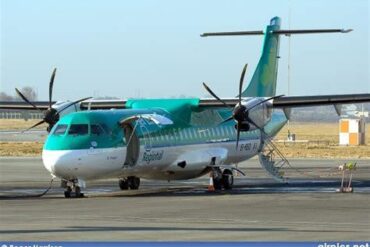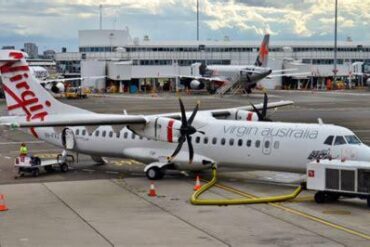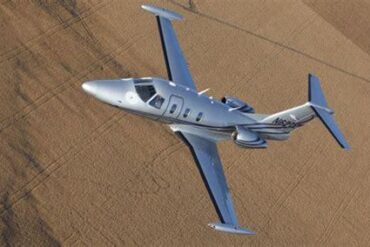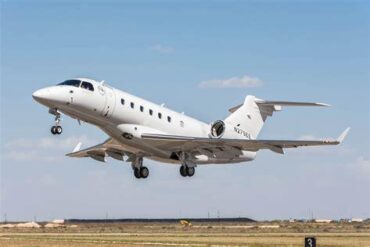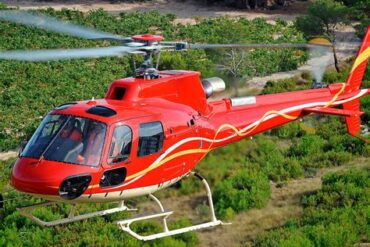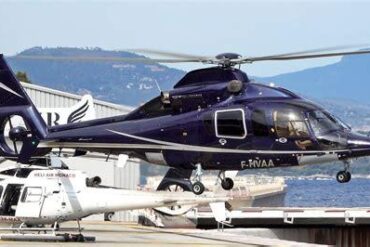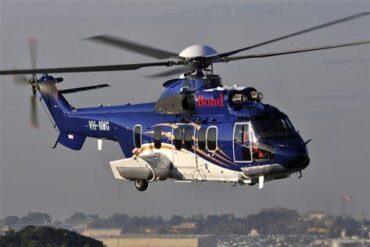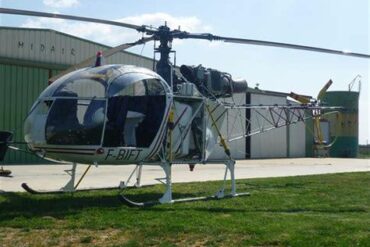Overview of the ATR 42-500
The ATR 42-500 is a regional turboprop aircraft developed by ATR (Aerei da Trasporto Regionale or Avions de transport régional), a Franco-Italian aircraft manufacturer. Known for its fuel efficiency and short takeoff and landing (STOL) capabilities, the ATR 42-500 is popular among regional airlines and operators in challenging environments. The aircraft is designed to carry up to 50 passengers and has become a staple in regional aviation markets worldwide.
Price of the ATR 42-500
List Price
The list price of a new ATR 42-500 is approximately $19 million. However, it’s important to note that this figure can vary significantly depending on various factors such as customization options, avionics packages, and seating configurations. The actual purchase price can be negotiated based on the volume of the order and the customer’s relationship with the manufacturer.
Market Value for Used Aircraft
The market value for a used ATR 42-500 depends on its age, condition, and maintenance history. As of 2024, the market price for a well-maintained ATR 42-500 typically ranges between $6 million and $10 million. Older models, particularly those that have been in service for several years, may be available at lower prices, but they often require significant maintenance and upgrades.
Financing and Leasing Options
Many operators opt to lease rather than purchase the ATR 42-500 outright. Leasing options can vary, but typical lease rates range from $70,000 to $100,000 per month, depending on the duration of the lease and the terms agreed upon with the lessor. Financing options are also available, with many financial institutions offering competitive interest rates for the purchase of regional aircraft like the ATR 42-500.
Operating Costs of the ATR 42-500
Direct Operating Costs (DOCs)
The Direct Operating Costs (DOCs) of the ATR 42-500 include expenses directly tied to the aircraft’s operation. These costs are generally broken down into fuel costs, maintenance, crew salaries, and insurance.
Fuel Costs
Fuel is one of the most significant operating expenses for any aircraft. The ATR 42-500 is known for its fuel efficiency, consuming approximately 1,200 liters of fuel per flight hour. With jet fuel prices averaging around $2.00 per liter as of 2024, this translates to a fuel cost of $2,400 per flight hour. The ATR 42-500’s fuel efficiency makes it a cost-effective option for short-haul routes.
Maintenance Costs
Maintenance costs for the ATR 42-500 are another crucial component of its operating expenses. These costs include routine maintenance, engine overhauls, and component replacements. On average, maintenance costs for the ATR 42-500 are estimated to be around $400 per flight hour. Additionally, operators must budget for scheduled heavy maintenance checks, which occur every 5-6 years and can cost between $500,000 and $1 million depending on the scope of work required.
Crew Salaries
Crew salaries for the ATR 42-500 typically include pilot, co-pilot, and flight attendant wages. The cost of crew salaries can vary based on the region and the experience of the crew members. On average, the annual cost of crew salaries for an ATR 42-500 is approximately $300,000 to $400,000.
Insurance
Insurance costs are a significant component of the ATR 42-500’s operating expenses. The annual insurance premium for an ATR 42-500 is typically between $75,000 and $120,000, depending on factors such as coverage limits and the operator’s safety record.
Indirect Operating Costs
In addition to direct costs, operators must also consider Indirect Operating Costs (IOCs). These include airport fees, navigation fees, handling charges, and overhead expenses related to the operation of the aircraft.
Airport and Navigation Fees
Airport fees for the ATR 42-500 can vary significantly depending on the airport and region. Typically, landing and parking fees for this aircraft range between $200 and $500 per flight, depending on the size and location of the airport. Navigation fees are also charged by air traffic control authorities, often based on the distance flown and the weight of the aircraft. For a regional route, navigation fees might range from $100 to $300 per flight.
Handling Charges
Handling charges, which cover services such as ground handling, catering, and passenger services, can add to the operating costs. For the ATR 42-500, these charges typically range from $500 to $1,000 per flight, depending on the airport and the services required.
Cost Per Available Seat Mile (CASM)
The Cost Per Available Seat Mile (CASM) is a crucial metric for evaluating the efficiency of an aircraft. For the ATR 42-500, the CASM is typically between $0.12 and $0.18, depending on factors such as route length, fuel prices, and passenger load factors. This makes the ATR 42-500 highly competitive in the regional market, especially on shorter routes where turboprops outperform jets in terms of efficiency.
Economic Benefits of the ATR 42-500
Fuel Efficiency
The ATR 42-500’s fuel efficiency is one of its most significant economic advantages. Its ability to operate on short regional routes with lower fuel consumption than comparable regional jets results in lower overall operating costs. This fuel efficiency is particularly beneficial in regions where fuel prices are high or where airlines operate on thin margins.
Versatility and STOL Capabilities
The ATR 42-500 is designed to operate in challenging environments, including airports with short runways and remote locations. Its STOL capabilities allow it to access airports that are out of reach for many other aircraft, making it an ideal choice for operators in remote or underserved regions. This versatility contributes to its economic value, as it can serve routes that would be unprofitable for other aircraft.
High Resale Value
Another economic benefit of the ATR 42-500 is its high resale value. Due to its reliability and popularity in the secondary market, the ATR 42-500 tends to retain its value better than many other regional aircraft. This makes it a sound investment for operators who may eventually look to upgrade their fleet.
Comparison with Other Regional Aircraft
ATR 42-500 vs. Bombardier Dash 8-300
The ATR 42-500 is often compared to the Bombardier Dash 8-300, another turboprop aircraft in the regional market. While both aircraft offer similar seating capacities and performance, the ATR 42-500 is generally considered more fuel-efficient and has better STOL capabilities. The Dash 8-300, on the other hand, is known for its robust design and ability to operate in extreme weather conditions.
ATR 42-500 vs. Embraer E145
Compared to the Embraer E145, a regional jet, the ATR 42-500 offers significantly lower operating costs, particularly on shorter routes. While the E145 can fly at higher speeds and altitudes, making it suitable for longer regional routes, the ATR 42-500’s fuel efficiency and lower maintenance costs make it a more economical choice for short-haul flights.
Conclusion
The ATR 42-500 is a versatile and economically efficient aircraft that offers significant advantages in the regional aviation market. Its fuel efficiency, low operating costs, and STOL capabilities make it a valuable asset for operators in various regions. Whether purchased new or acquired on the secondary market, the ATR 42-500 provides excellent value for money, with competitive pricing and strong resale value. For airlines and operators looking to serve short regional routes, the ATR 42-500 stands out as a top choice, combining cost-effectiveness with reliable performance.
